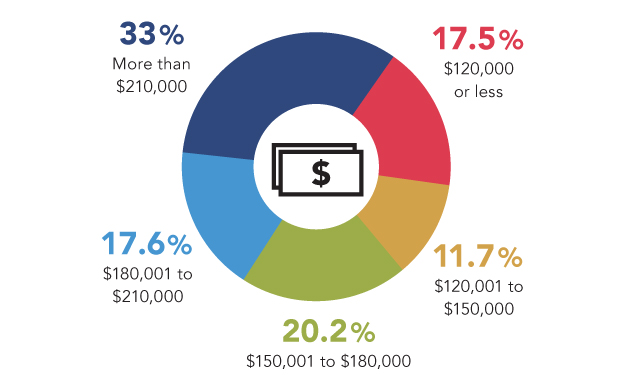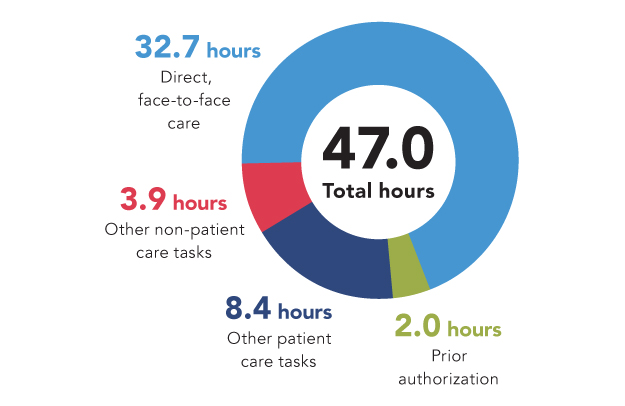AAFP report shows the state of the family physician

Income is increasing for family physicians but burnout may be as well, according to a report published by the American Academy of Family Physicians (AAFP). The report points out that family medicine was not officially recognized as a medical specialty in the US until 1969. Over the past 50 years, family physicians have made significant progress in certain areas but are still faced with a number of challenges.
Data gathered by AAFP shows that “the income gap between primary care and non-primary-care physicians has decreased from 44.6 percent in 2011 to 41 percent in 2015.” The report indicates that family physicians’ income is increasing slowly but steadily and the amount of time they spend in direct, face-to-face patient care is down slightly.
DISTRIBUTION OF FAMILY PHYSICIANS BY ANNUAL INCOME

The AAFP report emphasizes that “First-contact, person-focused, comprehensive, coordinated care – the hallmark of family medicine – is becoming even more important as the health system transitions to value-based payment.” Farzad Mostashari, MD, former National Coordinator for Health IT and now chief executive officer of Aledade states that “small, physician-owned practices have a lower average cost per patient, fewer preventable hospital admissions and lower readmission rates than hospital-owned practices.”
Patients value the time spent with their family physician, particularly those in independent practices. However, AAFP found that provider burnout rates are increasing, noting that “an alarming 63 percent of family physicians meet the criteria for burnout, compared with 54.4 percent of all physicians. When asked how they feel about the current state of the medical profession, 50.5 percent of primary care physicians report positive feelings.”
AVERAGE HOURS SPENT PER WEEK IN PRACTICE

Though a physician shortage still exists, more medical students are choosing to enter family medicine. The number of students matched with family medicine steadily increased from 2006 to 2016, the latest data available. The AAFP report notes that “continued recognition of the value of primary care, and continued increases in income, will play a vital role in family medicine’s ability to grow and to attract more medical students.”
Ripley Hollister, MD, FAAFP, a Colorado Springs, Colo., family physician and board member of the Physicians Foundation, noted in the report that “with time, as family physicians adjust, frustrations will lessen and satisfaction will rise. Family physicians have a long history of adapting to change, and the new generation of physicians appears to have more optimism.” Mostashari suggested that family physicians “will need to ingrain it into their culture and continually refocus on why they are doing the work – for patients.”






